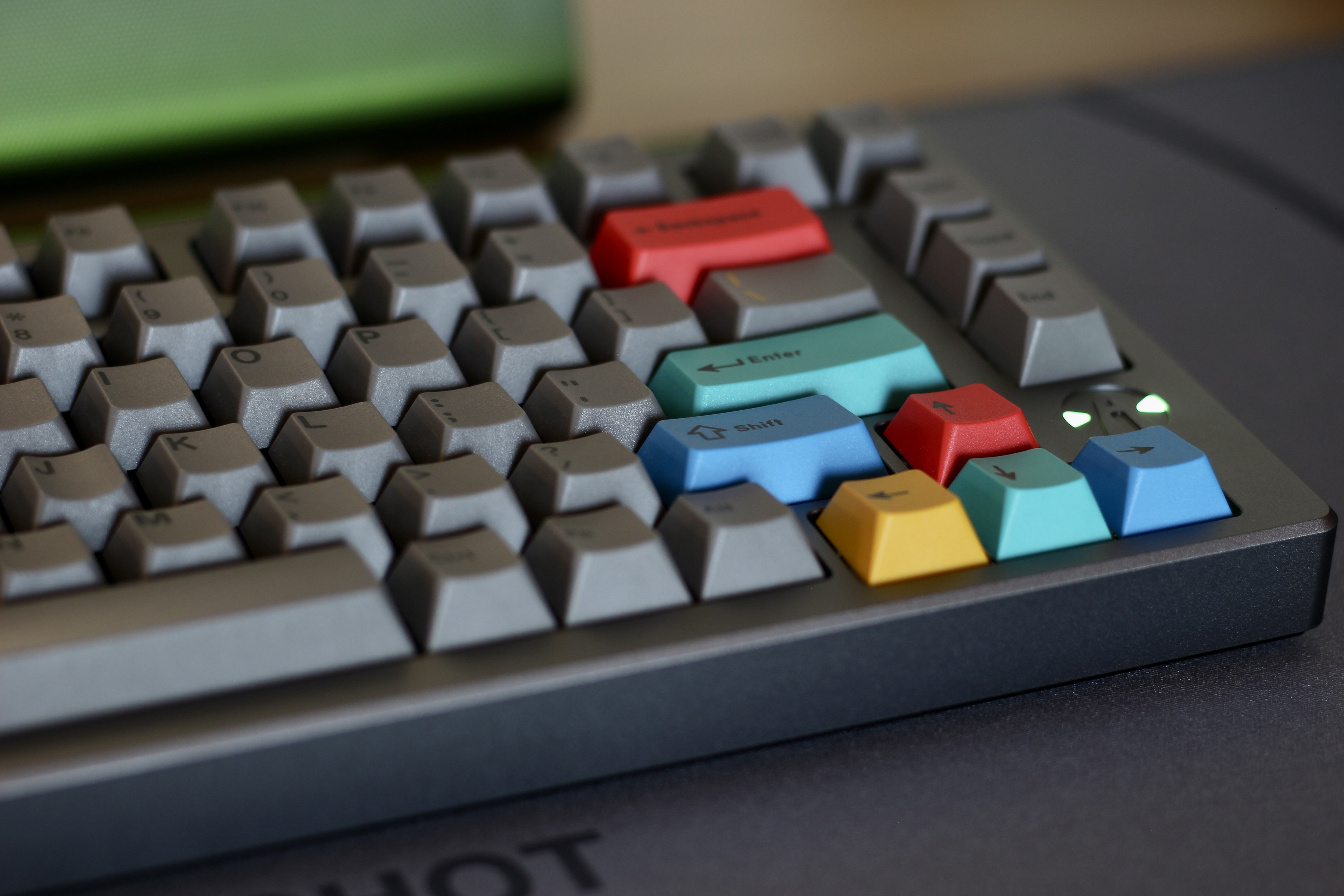I’m practicing for my driving licence and I’m going to driving school, just out of curiosity though I’ve looking on YouTube how to start and run a car and I’ve seen at least 3 different methods, I dunno which one is the correct. Things like the order when you release a pedal or when you need to press the clutch keep switching…
think less, practice more
Hold clutch + brake, start ignition
In my experience owning old pieces of crap, you start a manual transmission by pushing it until it’s rolling down an incline, and then jump in and quickly pop the clutch.
Seriously though, if you’re just learning how to drive a stick, do NOT take it to test for your license.
For the sake of teaching good habits, rather than telling you what I do, I would instead say read the manual for the car you’re driving. Not all cars operate the same way.
I don’t have a car, just passed theory
just to turn the car on? stick it neutral, push in the break and clutch (my modern requires both) and turn it on.
the break and clutch being pushed is just to trigger their switches as a form of safety control that the ignition requires. once the car is started they dont need to be engaged
- Put the gear in neutral (This prevents the car from trying to move when you turn the engine on)
- Press the clutch and the break fully (Same as above, also some cars won’t turn on unless you fully press the clutch)
- Turn engine on
- Remove hand break
- Put car in first (or reverse)
- Slowly release the clutch until you feel the car is stable (this is not needed if the street is not inclined, or is inclined in the direction you want to go)
- Release the break
- Slowly release the clutch while slowly pressing the accelerator
While the word for a thing used for slowing and stopping a vehicle probably came from the word meaning “to destroy or cause to not work”, they are spelled differently, and may even have been pronounced differently at one point (assuming there aren’t any places which maintain a difference even now). The thing in a car is a brake.
See also: “then” and “than” which have a similar kind of relationship, and “steak” and “stake” which don’t.
Aa ay luv mi sum daownvoats fer tryin tu help with spellinz
May ay sujest that we all comprumize on “braik” insted? :p
I can’t think of any other way to do it lol
🤔
Press the foot brake in-between turning on the engine and releasing the handbrake?
Only varient I can come up with because it makes no difference
Several people here have suggested the gearbox be in 1st gear, while starting. Dunno why.
I always shift to neutral, while starting, for safety (to avoid having the starter lurch), depress the clutch (as a 2nd layer of defense for the same) and still sometimes it happens that I forget both.
As for how to actually start moving: press clutch, put in 1st gear, release any brakes assuming you’re on level ground, slowly release clutch until you feel that the clutch starts engaging. Then hold it there for a moment, to allow the car to get a tiny bit of speed, until finally releasing it completely. If you release clutch too fast, it’ll overload the engine and it’ll stall. If too slowly, it wears the clutch, which is expensive to replace. Older gasoline-fueled cars with low torque at low RPM might need a bit of accelerator (say 2000RPM) to get moving without stalling.
Foot on brake, Shift to neutral, clutch in, start
Put into gear and drive
I’ve always parked with first gear engaged (and parking brake), so when I turn it on I press the clutch while still being in first. Do people not do that and instead shift to neutral?
I do to just in case something is wrong with the parking break, then the first gear keeps the car in place, especially on a hill.
I had my car demolished once while it was parked and someone parked higher up on the him, forgot the parking break and had it in neutral. They just quickly went to the small backery to get some bread, while their car solled down the hill and hit my car. Had to buy a new one, it came down with such a force.
I always left mine in neutral but when I’d take it to a shop they’d leave it in gear and I’d lurch forward like an amateur when I left. I’m not convinced there’s a difference between the two but I’m no mechanic
Same here, always left it in neutral and let the handbrake hold the car, mechanic always left it in 1st with no handbrake.
Dude might not like the handbrake though, got an auto now and that doesn’t get the handbrake on either.
do both: if the brake fails, the back pressure of the engine will have limited ability to hold the car in place! it might be enough to save not only your car, but someone’s life if it’s on a hill
Think about it this way: in the unlikely event that your parking brake fails while you’re parked, which direction is gravity going to make the car roll? Park in the gear that opposes that roll. So if you’re facing up an incline, park in first gear. If you’re facing down, park in reverse. If you’re on an absolutely flat surface, park in whichever you want.
By the way, this isn’t just a good idea for hills, but for uneven driveways or parking lots.
You don’t need to put it in the gear opposite to the direction it’ll roll. Generally you want to put it in the gear with the lowest ratio (which in my car I think is first), as that will require the most amount of force to turn the engine. But also some engines shouldn’t be rotated backwards because that might damage them. So that would mean put it in first facing downhill or reverse facing uphill.
That’s how I always did it, using the shifted gear as a secondary brake just in case, opposite of whatever incline I was on. But I learned back when pumping the brakes was also considered a skill you had to learn, so maybe it doesn’t apply with more modern cars?
I am still in the habit of turning my wheels in when I park on a hill.
Do people not do that and instead shift to neutral?
No, you are doing it perfectly right.
Only the automatic needs the neutral.
Automatics start in park
OK so now I know again that I don’t have one :)
Wind the window down, stomp the A-pedal and clutch pedal into the floor, turn the key until the engine roars, dump the clutch like it’s last season’s fashion. Savour the heady mixture of tyre smoke and unburnt fuel as you peal out into traffic.
Clutch must be depressed on most modern cars or it won’t start, though it’s technically not required if in neutral. And best to depress the brake pedal as well, again, many modern cars won’t even start if you don’t.
And although it doesn’t matter what gear the shifter is in when the clutch is depressed, put it in neutral, so that if you accidentally let off the clutch after starting it, you don’t move, grind gears, or lurch and stall which puts strain on the gearbox and brakes. I’ve done that many times before I started checking the shifter first. Many people put the shifter in first gear when parked as an engine brake in case the parking brake fails.
The key is to understand what the controls do instead of memorizing a procedure.
When you start the car, you probably don’t want it to instantly lurch forward. So, you need to decouple the engine from the wheels, which you can do either by putting the transmission in neutral or by pushing in the clutch (or both). Once it’s running, either you can let the clutch out in gear to start moving, or let it out in neutral if you want to remain stopped for a while.
It’s not so much that one procedure is “correct;” it’s that you decide what you want the car to do and manipulate the controls to make that happen. It’s only not correct if it does something you didn’t intend.
Instructions unclear, my engine and wheels are sitting on the lawn now, what should I do?
Ah, like this?
The key there is to double-check that all your lug nuts are tight (let alone installed at all, LOL!) when you swap from your street wheels to your autocross wheels, and vice-versa.
Same goes for your motor mount bolts if your engine fell out, I suppose!
(In all seriousness, though, nothing you can do just trying to drive stick is capable of launching the engine out of the car. The worst-case scenario, aside from losing control and causing a wreck, is a money shift – accidentally downshifting to too low a gear and over-revving the engine – but even if it managed to blow a hole in your engine block, the bulk of the thing would largely stay within the engine compartment.)
Make sure it’s in neutral and that the handbrake is on, then start the car.
Just use the clutch while starting the engine and you can be in any gear you want.
Confirm the gear selector is in neutral by wiggling it rapidly left to right three times - three is the number - five is right out.
Wiggle the gearschtick, yes.
From ye olde driving manual, when all cars were manual:
“Then, shalt thou count to three. No more. No less. Three shalt be the number thou shalt count, and the number of the counting shalt be three. Four shalt thou not count, nor either count thou two, excepting that thou then proceed to three. Five is right out. Once the number three, being the third number, be reached, then…”
Make sure the car is in neutral and handbrake is on before starting. It’s not strictly necessary but you should make this a habit for safety.
Buckle up. Make yourself aware of your surroundings.
Insert and turn key / press button. Newer cars require clutch and/or brake to be pressed to start, check the car manual if unsure.
Key shouldn’t need to be turned for long - if its kept turned when the engine starts you’ll hear a horrible grinding noise. Avoid this.
The car should now be started. Take your foot off clutch/brake, nothing will happen (as long as you ate in neutral with handbrake on).
To start moving, press the clutch, put the gear stick in 1st, start smoothly lifting your foot off the clutch. You’re looking for the bite point of the clutch - when you start to feel the car want to move. This takes practice and you will stall the car many times before its natural. Once you’ve found the bite point, its time to release the hand brake*, and start gently pressing the accelerator as you lift your foot the rest of the way off the clutch.
It takes a while for this to be smooth.
*you could release the hand brake before this and use the brake pedal instead.
When you want to change gears, take your foot off the accelerator, press the clutch, move the gear stick to the right gear, release the clutch smoothly, press the accelerator
Instructions unclear, car stuck in ceiling fan
In my car, I need to push the accelerator first, a little bit, then I can release the clutch to the bite point, all while giving the engine enough gas not to die.
when I learned in a manual it was about swapping the accelerator and clutch like Indie swapping the statue for a bag of sand.
Some cars won’t start unless the clutch is pushed in. Some will. If you are in gear, it will push the car forward.
The most complete and safest way for all cars is.
Foot on brake. Clutch in. Put in neutral. Start car.
That should work and be safe in all manual cars. It is likely the “correct” way for a driving test.
Once you get to know a car, you might just use the brake and clutch and leave it in gear when starting the car.
No. If the clutch is in, there is no need to put in neutral. (You would not pass the driving test in Germany)
The correct steps are:
Right foot press down on the brake
Left foot press down on the clutch
Start the engine
check that the 1. gear is in
Then release the brake, get on the gas just a little, release the clutch carefully, and there you go.
Why would they fail you for putting the car in neutral and pushing the clutch in before you start the car?
What are you supoosed to do if you want to let the car warm up or you’re waiting for someone or any other reason you want to start the car but not immediately start driving? Are you supposed to put it in first, push in the clutch, start the car and then just leave the clutch pushed in for 5 minutes?
What are you supoosed to do if you want to let the car warm up
LOL
Guess what: You are supposed not to do it.
That is explicitly forbidden in Germany, for the sake of the environment.

lol I guess I shouldn’t expect more from a country where the AFD is running away with elections
I guess countries are not made for your expectations…
…how do you demist your cars?
Not sure if I understand. Tell me more details.
It’s a wet morning and the inside of your windshield is fogged up. (Or it’s cold and there’s frost on the inside)
Most people take a rug or a sponge and wipe the windshield. Then after starting, the air condition helps.
Some cars have a heatable windshield. All have a heatable rear window.
Until the engine warms up, I can’t keep the windscreen from misting up in the winter. Especially if it’s frosted on the outside!
The outside is the easy part (unless there is thick ice): use the water spray with the wipers. In the winter, the water contains a thawing solvent.
For the inside, what I personally do in the winter: before parking my car in the evening, I open all the windows for a few minutes to let the cold air in (also switch off the heating). Cold air is very dry. So it does not mist up (most times) in the morning.
You fix your leaky weatherproofing and put a dehumidifier inside overnight to get rid of the leftover moisture. Afterwards your windows will no longer mist up.
Fix the issue instead of treating the symptoms
Modern car engines would need a very long time to warm up in idle anyways, and modern cars usually have electronic defrosters for the windshield
Older (pre 2000) diesel cars needed a few seconds, sometimes a minute to “warm-up” the starter. You had to turn the ignition half way before you actually start the car. That’s the only “warming up” a car might need to function (normal circumstances).
Glow plugs. They needed time to heat the glow plugs, which look like spark plugs, but function like an incandescent light bulb. They would be a nice hot spot in the cylinder to help ignite the fuel and get the engine started.
While the engine doesn’t need to be warmed up anymore, the HVAC system may need the engine to be hot before it can keep the windshield defogged and ensure the driver’s view remains unobstructed.
That’s not warming up the starter, that’s warming up the glow plugs. And turning on the ignition doesn’t require you to be in neutral or press the clutch, since it doesn’t turn the engine
No. If the clutch is in, there is no need to put in neutral.
Disagree.
It is possible for the clutch pedal to fail to disengage a malfunctioning clutch, or for a clutch cable to part while the vehicle is being started. In either case, the vehicle will lurch when in gear and the starter is actuated.
I know it is possible, because I hit the back wall of a barn with a dump truck when it happened to me.
Except for emergency scenarios (roll starting, or trying to use the starter motor to move an otherwise disabled vehicle), the transmission should be in neutral when starting, and not shifted out of neutral until the hand brake is released.
I guess they just don’t use broken cars in the driving test.
Excuse me, Whatthefuck.
Mechanical shit breaks, things go wrong. Standard practice should be to operate in such a manner as to minimize danger to life and property when shit breaks and things go wrong.
Offer a reasonable explanation for why the transmission should be in first gear. If that explanation is some variation of “This authoritarian that said to do it this way”, ignore them with extreme prejudice and do it the right way.
Excuse me
No, I do not excuse foul language, and this will be my last response for you.
If that explanation is some variation of "This authoritarian that said
The question here was about a driving test, not about some mechanical science. Case closed.
I will note that I didn’t ask you to excuse my foul language. I was addressing your condescending horseshit comment.
Assuming you have accurately represented German testing standards (which doesn’t seem likely), the proper course of action here is to either provide the requested explanation, or petition the German government to correct this error.
Lol, I’m not from Germany but I seriously doubt they’d fail you in a driving test because you put the car in neutral before you start it. That’s just ridiculous.
It is OK if you put the 1. gear in before you start the engine, but you should not put in neutral.
Justify that, please.
I hit a barn with a dump truck because the clutch pedal failed to disengage the clutch, and I was in first gear when I tried to start. In neutral, the truck would not have lurched forward, and I would have discovered the problem when I couldn’t slip the transmission into reverse.
The transmission should be in neutral until the hand brake/parking brake is released, and you are ready for the vehicle to move.
I hit a barn with a dump truck because the clutch pedal failed to disengage the clutch
Then your right foot was not firmly on the brake, see step 1.
Warum? War bei mir damals™ nicht so, eher im Gegenteil. Erstmal checken, ob auch ja kein Gang eingelegt ist.
Möglicherweise haben sie die Regeln irgendwann geändert, das weiß ich nicht.
I got a minor error on my test in the UK for “unnecessarily touching the gear stick” so …
That’s insane. Starting in neutral is arguably safer.
This is the way.
Fun fact, once I brain farted and didn’t put the clutch in and the car was so old it didn’t have a kill switch and it stuttered forward right into a house. That was fun.
Another fun fact: occasionally, that’s a legitimate technique. I have an old manual Toyota 4Runner 4x4 that actually has a “clutch start cancel” button you can use if, say, you stall in a tricky rock-crawling situation. You can crank the starter to crawl forward without risk of rolling backwards, like might happen if you actually started the engine and tried to use the clutch.
I gotta find it again, but someone in a race finished his final lap after running out of gas by leaving the clutch engaged and just running the starter lol. It was enough to keep the car rolling until the finish line.
I did the same but in reverse!
push down clutch pedal
put car in fifth gear
start the engine
push down gas pedal until you hit the rev limiter
slowly release the clutch until it smells rightThis right here it the proper way. Another trick is to wrap some bacon around your bell housing. When you can hear the bacon sizzle then you know you’re doing it right. The grease from the bacon also helps keep the clutch disk nice and lubricated.
I honestly don’t find this sort of disinformation funny.
Wait until it shows up in a Google AI result. Superket is playing the long game













